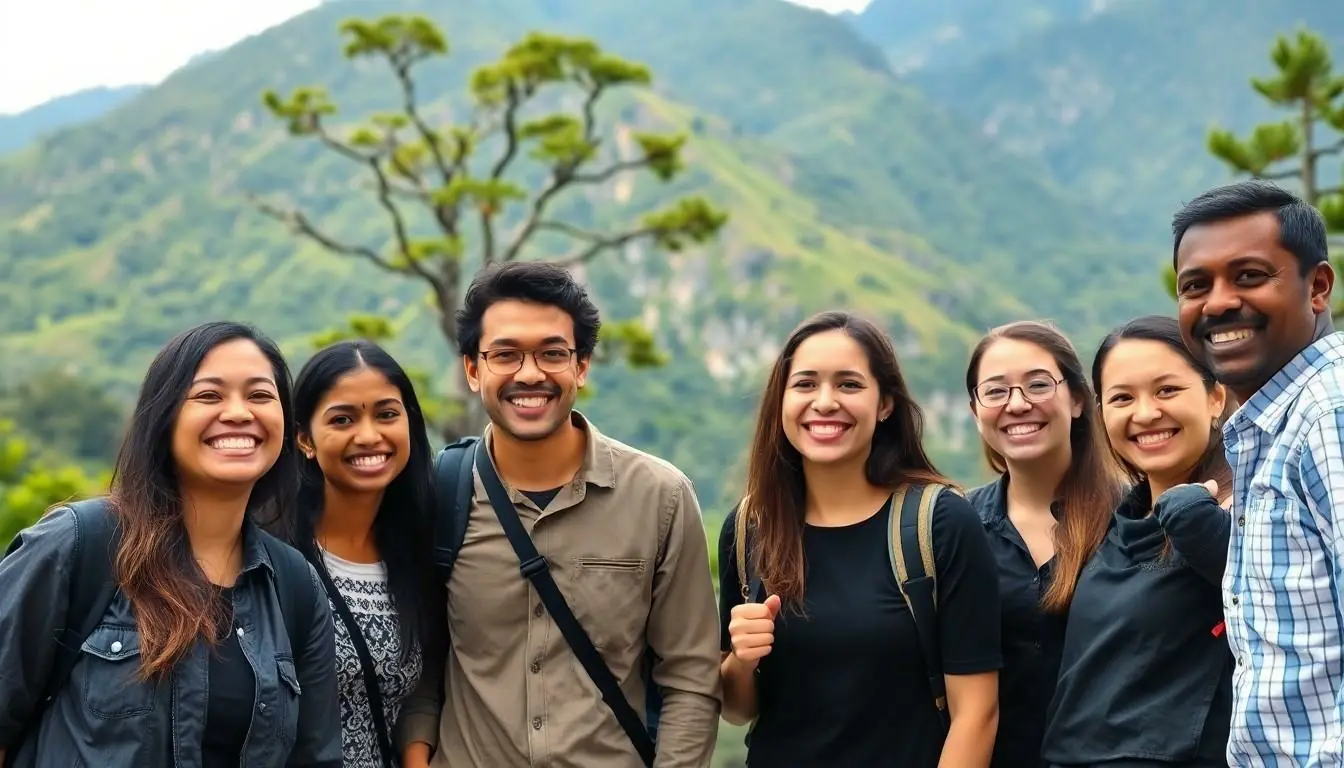Imagine trading the office cubicle for a sun-soaked beach or a thrilling mountain retreat. Group incentive travel isn’t just a fancy getaway; it’s a powerful tool that companies use to boost morale, strengthen bonds, and reward hard work. When teams embark on these adventures together, they not only create unforgettable memories but also return to work with renewed energy and camaraderie.
In a world where the daily grind can feel like a never-ending hamster wheel, group incentive travel offers a refreshing escape. It’s more than just a trip; it’s a chance to celebrate achievements, ignite motivation, and cultivate a culture of appreciation. So why not swap those boring team meetings for a little adventure? After all, who wouldn’t want to earn a trip that feels more like a vacation and less like a corporate obligation?
Table of Contents
ToggleWhat Is Group Incentive Travel?
Group incentive travel refers to trips organized by companies to reward and motivate employees. These excursions typically include a variety of activities tailored to foster teamwork, enhance relationships, and promote a sense of belonging. Companies utilize these travels not only to celebrate achievements but also to demonstrate appreciation for hard work.
Participants often engage in team-building exercises, adventure activities, or relaxation experiences designed to create lasting memories. Destinations usually range from tropical resorts to culturally rich cities, ensuring that the location aligns with the interests of the group. This alignment enhances enjoyment and engagement during the trip.
Moreover, group incentive travel can improve company culture significantly. Employees return from these trips rejuvenated and more connected to their peers, leading to improved morale and productivity. Many organizations notice a positive impact on employee retention rates as team members feel valued and recognized for their contributions.
The planning process of group incentive travel involves careful consideration of the group’s preferences and the objectives of the organization. Companies often collaborate with travel agencies specializing in corporate travel to streamline logistics and create tailored experiences. Budget constraints and travel policies play a crucial role in shaping the itinerary and overall experience.
Lastly, companies measure the success of these incentives through employee feedback and performance metrics. Effective group incentive travel not only rewards employees but also reinforces company values and builds stronger teams. In this way, organizations create a win-win scenario that benefits both employees and the company as a whole.
Benefits of Group Incentive Travel

Group incentive travel offers significant advantages for companies. Engaging employees on shared experiences enhances their connection to the organization.
Boosting Team Morale
Team members often return from group incentive trips with renewed enthusiasm. Enjoyable experiences foster a sense of accomplishment, as employees celebrate their hard work and achievements. Participants often report increased job satisfaction, feeling valued for their contributions. A well-planned getaway serves as a reward, reducing stress and promoting positivity. Regular exposure to these enriching experiences can lead to a more motivated workforce.
Enhancing Collaboration
Collaboration thrives in the relaxed atmosphere of group trips. Team-building activities encourage open communication and trust among participants, leading to better problem-solving skills. During these excursions, employees often form strong relationships, ultimately translating into improved teamwork in the workplace. Feedback collected post-trip typically reflects greater willingness to collaborate on projects. An environment fostered by shared experiences propels innovation and boosts overall organizational effectiveness.
Types of Group Incentive Travel Programs
Group incentive travel programs vary widely to meet different organizational goals and employee interests. Companies often choose programs that resonate with their team’s dynamics, ensuring maximum engagement and enjoyment.
Adventure-Based Incentives
Adventure-based incentives focus on exhilarating experiences designed to foster teamwork and personal growth. Employees participate in activities such as zip-lining, rock climbing, or white-water rafting. These escapades challenge participants physically and mentally, promoting collaboration. Teams bond while overcoming obstacles together in thrilling environments. Reports suggest these high-energy trips often lead to increased morale and enhanced creativity. Select destinations, like Costa Rica or Colorado, provide ideal backdrops for these adventures, blending fun with personal development.
Luxury Experiences
Luxury experiences aim to create unforgettable memories through refined travel. These programs often include stays at high-end resorts and access to exclusive events. Employees might enjoy gourmet dining, spa treatments, or private group excursions to cultural landmarks. Such rewards communicate appreciation for hard work and dedication, making participants feel valued. Destinations like the Maldives or Monaco fit perfectly within these luxury settings, offering stunning views and first-class services. Feedback indicates that such experiences significantly enhance employee loyalty and satisfaction within organizations.
Planning a Successful Group Incentive Travel Program
Effective planning sets the foundation for a successful group incentive travel program. Focus on establishing clear objectives and managing budgets and logistics to enhance the overall experience.
Setting Clear Objectives
Establishing specific goals ensures the group incentive trip aligns with company mission and employee needs. Consider factors like desired outcomes, such as increased motivation, enhanced teamwork, or improved communication. Align objectives with organizational values and consider employee preferences to boost engagement. Prioritize feedback from participants during the planning phase to guide decision-making. Ensuring that objectives are clear not only enhances focus but also strengthens the participants’ connection to the organization.
Budgeting and Logistics
Budgeting plays a critical role in determining the scope and success of the travel program. Clearly outline expected expenses, including accommodations, transportation, meals, and activities. Collaborating with a travel agency simplifies logistics and helps avoid common pitfalls. Ensure that itineraries reflect the preferences of the group, maximizing enjoyment within budget constraints. Keep in mind group size and potential bulk discounts when considering costs. Engaging employees throughout the planning process helps maintain transparency and encourages ownership of the experience.
Measuring the Impact of Group Incentive Travel
Evaluating the effects of group incentive travel involves analyzing several key metrics. Employee engagement scores often rise significantly post-trip, indicating a stronger connection to the company’s mission. Many organizations report increased teamwork collaboration, as individuals return with new perspectives and shared experiences.
Tracking performance metrics such as productivity levels can illustrate immediate benefits following these trips. Employees frequently demonstrate enhanced motivation and output, reflecting a direct correlation between travel experiences and workplace performance. Retention rates also show improvement, with teams reporting a greater sense of belonging within the organization.
Surveys serve as a valuable tool in gathering feedback after trips. Post-experience evaluations often reveal higher job satisfaction levels and a renewed sense of commitment to shared goals. Engaging employees in these surveys can yield insights into which elements of the trip resonated most and what adjustments may enhance future travels.
Cost analysis plays a vital role in assessing the return on investment. Understanding the financial implications of group incentive travel helps companies justify budgets while ensuring alignment with corporate objectives. Organizations need to correlate improvements in employee retention and productivity against travel expenditures for a comprehensive evaluation.
Lastly, anecdotal evidence can enrich quantitative data. Stories from employees about their experiences foster a stronger narrative around company culture and reinforce the value of group incentive travel. This combination of qualitative and quantitative assessments enables companies to measure the overall effectiveness and impact of these motivational journeys.
Group incentive travel stands out as a powerful strategy for companies aiming to boost employee morale and strengthen team dynamics. By transforming traditional meetings into exciting adventures, organizations can cultivate a culture of appreciation and collaboration.
These trips not only reward hard work but also create lasting memories that enhance employee loyalty and satisfaction. As teams return rejuvenated and connected, the positive ripple effects on productivity and workplace relationships become evident.
Effective planning and alignment with employee interests are key to maximizing the benefits of these experiences. Ultimately, group incentive travel fosters a motivated workforce ready to tackle challenges together, driving organizational success.





